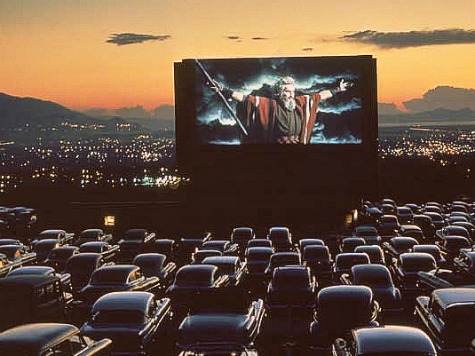
Not too long ago I barely knew what a drive-in movie theater was.
I knew there was a time when people sat in their cars making out while B movies played on a big screen, but I assumed those days were dead and gone. This is why I was so confused when my girlfriend told me she would be helping to manage and fundraising for a drive-in movie theater. I was perplexed. I hadn’t even known one existed in the area.
One day I decided to pick her up from work and I saw things I had never seen before. There was this large stretch of land with a gigantic screen in front of it. Tires tracks lay in the dirt, a booth existed next to the screen to collect tickets and there was a small building to sell snacks and such. People watched movies like this? I immediately became curious.
I met the owner and was given a bit of a history lesson. The specific drive-in movie theater I found myself standing in (located in Saco, Maine) was the 17th drive-in to be built in America. It had opened its gates in July of 1939 with a showing of Forbidden Music starring Jimmy Durante. It had cost only 35 cents to get in. I also learned the Saco, Maine Drive-In is the second oldest drive in in America to still be in operation.
All this background made me smile. I enjoyed learning the history of both cinema and America, and I also loved that their was a certain rugged romanticism and nature to the idea of drive-in movie theaters that fit perfectly with the idea of American capitalism and family values. However, after my brief trip down memory lane, I learned something a little depressing.
Most cinema lovers are more than aware of the fact that studios and filmmakers are moving from film to digital. Theaters are being forced to follow suit. Drive-In theaters are having a particularly hard time with the conversion given the high costs involved, and this year seems to be the deadline for most. The decline from the drive-in’s early days is profound:
The industry took off in the postwar era, offering more than 4,000 screens in the 1950s, according to a trade group. But that total fell to a mere 606 screens in 2011, the last year for which figures are available from the National Association of Theatre Owners.
It’s a sad fact because I have come to discover how important the business of drive in movie theaters are to the history of America and the history of cinema going. Countless generations could lose the experience of drive in movie theaters which is a shame because they are an entirely different way to enjoy film than at a conventional theater (and much cheaper).
I asked people like my father about drive ins, and they could only smile as the memories came flooding back. My father told me a story about working at a farm during the summer of his junior year in high school and the owner thanking his young workers by piling them up in the back of his truck and taking them to see Apocalypse Now at the local drive in. They ate popcorn and joked as they all experienced their first R-rated movie courtesy of the farmer sleeping in the driver’s seat.
It is small memories and stories like that that make me want to see drive-in theaters survive. Brick and mortar theaters inspire nothing but complaints from moviegoers these days, so it is nice to know places exist that contain a certain historical importance and a poetic nature that goes hand in hand with watching movies. From the fresh smell of the night air to the feeling of lounging in your own vehicle with your loved ones, the drive-in experience is one that cannot be duplicated easily.
With this being the year that drive ins are fighting to survive, I would like to make a few requests from our fantastic readers: first, please share any memories or stories you have of a drive-in movie theater from your life in the comments section. Don’t let that history and those experiences die.
Next, find out what drive ins are still open in your local area and do what I did: check out the history, see if you can help and, most importantly, see a couple of movies there.
And, lastly, if we truly want to make a difference as Americans and cinema lovers then, if you feel inclined, donate whatever you can to help save the very drive in I’ve been speaking about. They are the second oldest in America and one of many fighting to survive. Readers can donate to help keep it alive and help preserve something important to both American history and cinema itself.

COMMENTS
Please let us know if you're having issues with commenting.